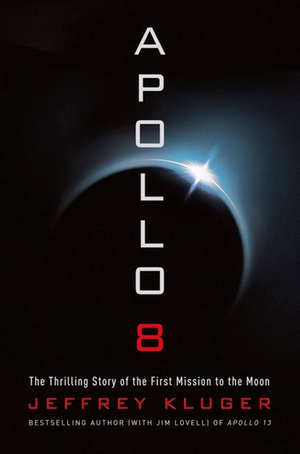Review: Apollo 8by Jeff Foust
|
| With Lovell something of a known quantity already thanks to the fame of Apollo 13, Kluger focuses more attention on the mission’s commander, Frank Borman. |
Nearly a half-century earlier, though, the calculus, and the outcome, were very different. In the late summer of 1968, NASA leadership approved plans to send astronauts into lunar orbit on the Apollo 8 mission that would launch that December. With the Space Race against the Soviets reaching a crescendo, the risks were worth it—and the rest is history.
That mission, at least as audacious as anything NASA has done before or since, is the subject of the book Apollo 8 by Jeffrey Kluger, the Time magazine journalist who more than two decades ago chronicled the ill-fated flight of Apollo 13 in Lost Moon with Jim Lovell. This time writing without an astronaut co-author, Kluger offers a detailed, and entertaining, account of this mission.
With Lovell something of a known quantity already thanks to the fame of Apollo 13, Kluger focuses more attention on the mission’s commander, Frank Borman. An Air Force pilot who had to fight to get back on to flight status after suffering a ruptured eardrum early in his career, he became a test pilot before being selected as a NASA astronaut, flying with Lovell on the two-week Gemini 7 mission before becoming involved in the development of the Apollo program. He had already been named commander for what was then known as Apollo 9, a high Earth orbit test of the Apollo spacecraft, when NASA asked him and his crew—Lovell and Bill Anders, introduced much later the book—to take Apollo 8 to the Moon instead.
The launch of Apollo 8 itself takes place about halfway into the book, after discussion of the backgrounds of its crew and planning for the mission. The mission is, of course, well known, but Kluger is able to make the account compelling, illustrating the ups and downs of the mission, such as the thrills of seeing the Earthrise from lunar orbit, or Borman’s battle with spacesickness early in the flight. That’s interspersed with anecdotes from those working in mission control and the families of the crew.
| One thing Apollo 8 does not do, unfortunately, is shed much new light on the decision to fly the mission in the first place. |
Kluger relies primarily on interviews, including with all three members of the crew, as well as transcripts from the mission and other accounts. That provides a richness to his account, with extensive dialogue either from those transcripts of the astronauts’ and others’ recollections. That livens up what would otherwise be a familiar story about a famous mission.
One thing Apollo 8 does not do, unfortunately, is shed much new light on the decision to fly the mission in the first place. The book starts with the story of Borman being summoned to Houston to learn that the mission would be a lunar orbital flight. However, in this telling, he’s not told why that change is being made, contrary to Borman’s autobiography written nearly 30 years ago, where he’s told it’s because of CIA intelligence of Soviet plans to carry out a similar mission. Later in the book, there’s reference to information “pinging across America’s own intelligence web” about Soviet plans, but no further details. Recently declassified documents suggest that the CIA was, in fact, tracking Soviet lunar mission plans, but what they told NASA, and when, remains uncertain (see “Chasing shadows: Apollo 8 and the CIA”, The Space Review, April 11, 2016).
The book also suggests that delays in the development of the lunar module and “grumbling from a budget-conscious Congress” also played a role in the decision, but the weighting of those factors isn’t explored. In any event, that combination of factors led NASA to proceed with Apollo 8, despite the risks. That similar combination of reasons, for better or for worse, does not exist today to lead NASA and the White House to accelerate current human spaceflight plans.
